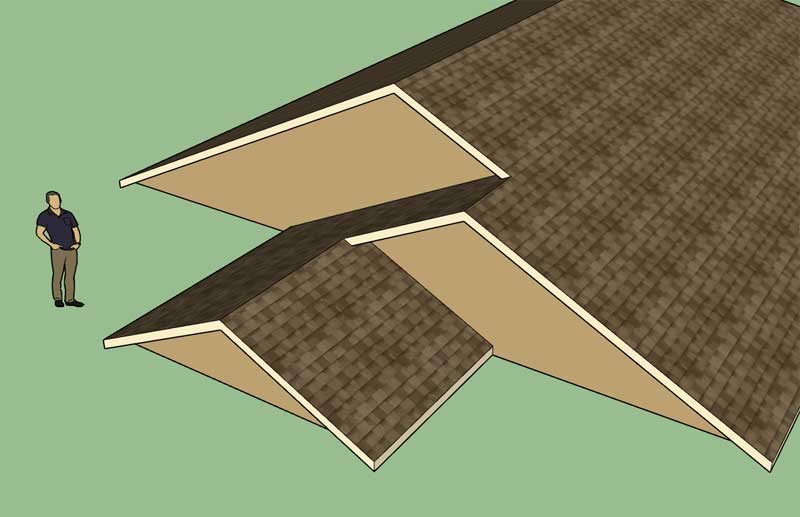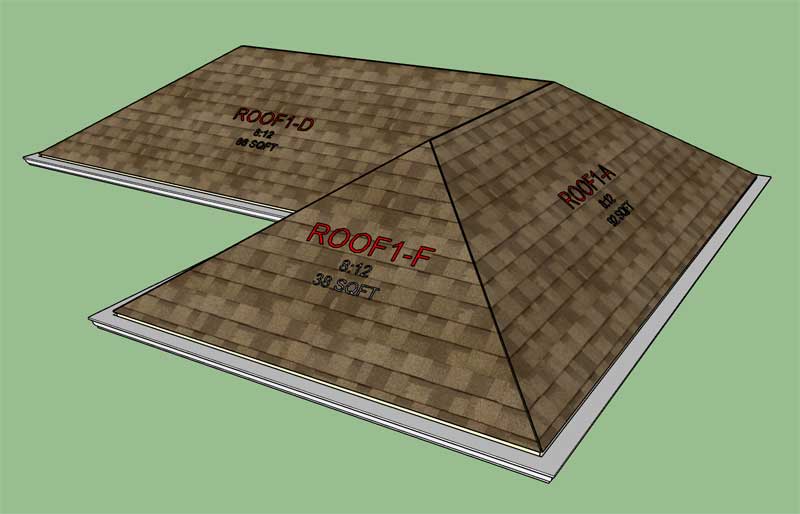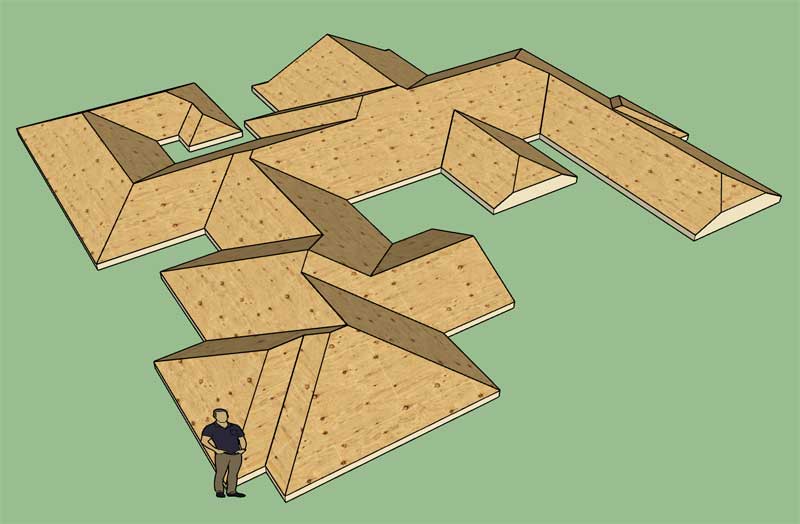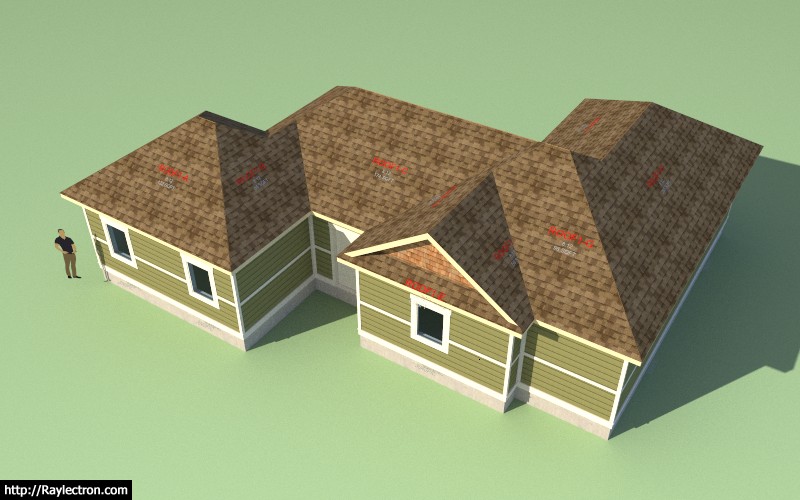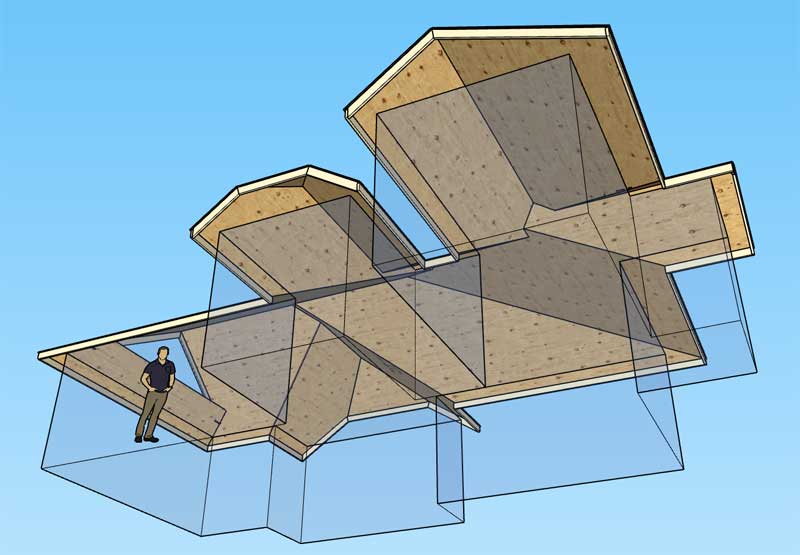Notice how the sheathing is now projecting underneath the gable overhangs:

Now I just need to get the cladding to behave similarly and then a few adjustments to the sub-fascia and gutters.

Now I just need to get the cladding to behave similarly and then a few adjustments to the sub-fascia and gutters.


